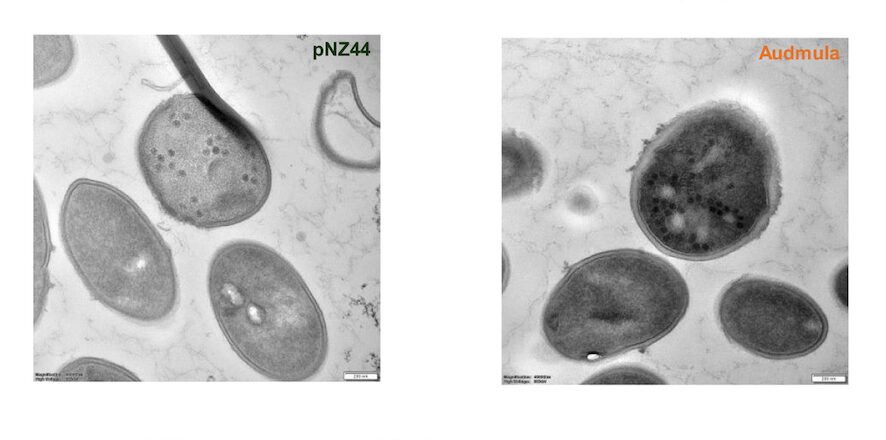 |
|
| DNA and RNA. Credit Gabriela Slizewska |
A bacteriophage, also known as a phage, is a virus that infects and replicates within bacteria and archaea. Like any other viruses, they are made up of nucleic acids encased in a protein coat (capsid). Although morphological appearance is one of the characteristics used to classify phages (Phage morphologies), evolving molecular technologies have enabled other cellular characteristics to be incorporated into microbe classification. One of the molecular-level aspects is the virus’s genomic content. Phage genomic composition is extremely diverse, consisting of DNA or RNA, which can be single-stranded (ss) or double-stranded (ds). The genomes of RNA viruses are smaller than those of their counterparts (DNA viruses). Many scientists have largely ignored RNA viruses in their research, preferring to concentrate on DNA viruses. Until now, only two families of these viruses have been identified as having RNA as their genomes. RNA phages are frequently used as prototypes in modern recombinant virus-like particle (VLP) technologies.
DNA phage families
List of bacteriophages with DNA genomes
- T4-Infect E. coli
- Enterobacteria phage T2
- Enterobacteria phage T6
- lambda
- Mu
- M13
RNA phage families
List of bacteriophages with RNA genomes
- MS2-Infect E. coli and some other members of Enterobacteriaceae
- Bacteriophage f2-Infect E. coli
- Bacteriophage Qβ (Q beta)-infects bacteria that have F-pili
- Pseudomonas phage ϕ6
- Enterobacteria phage GA
Sources
- https://www.thoughtco.com/bacteriophage-virus-that-infects-bacteria-373887
- https://www.ncbi.nlm.nih.gov/pmc/articles/PMC6071253/
- https://www.frontiersin.org/articles/10.3389/fmicb.2016.01911/full
- https://www.karger.com/Article/Fulltext/449503
- https://journals.plos.org/plosbiology/article?id=10.1371/journal.pbio.1002409
- https://www.technologynetworks.com/immunology/articles/lytic-vs-lysogenic-understanding-bacteriophage-life-cycles-308094
- https://courses.lumenlearning.com/boundless-microbiology/chapter/viral-diversity/
- https://microbiomejournal.biomedcentral.com/articles/10.1186/s40168-020-00990-y
- https://bio.libretexts.org/Bookshelves/Microbiology/Book%3A_Microbiology_(Boundless)/9%3A_Viruses/9.7%3A_Viral_Diversity/9.7B%3A_RNA_Bacteriophages
- https://academic.oup.com/femsle/article/363/6/fnw027/2570238
- https://en.wikipedia.org/wiki/Bacteriophage
- https://www.britannica.com/science/bacteriophage
- https://talk.ictvonline.org/taxonomy/



[…] viruses play a crucial role in either constructing the satellite’s protective shell or aiding in DNA replication. However, while it was understood that satellites and helpers had to be in proximity to […]
[…] Are Bacteriophages (Phages) DNA Or RNA Viruses? […]
[…] first appreciate the remarkable biology of bacteriophages. These minute entities consist of a protein coat encapsulating genetic material, either DNA or RNA. Upon encountering a susceptible bacterial host, a bacteriophage attaches to the cell surface and […]
[…] against several DNA-based phages like T4, T1, and λ. However, IC didn’t work on MS2, an RNA-based phage. This difference led researchers to believe that IC interacts with DNA but not RNA, explaining why […]
[…] Bacteriophages have genetic material that can be RNA or DNA, which may be circular or linear, single- or double-stranded. Isolating phage DNA is similar to isolating DNA from other microbes, though contamination from bacterial genetic material is a risk. Because phage isolation requires a large quantity of phages (measured in PFU), it may be necessary to multiply stocks. The enrichment process is used to increase the number of bacteriophages. In this approach, a culture of the target bacteria is grown overnight (depending on the host) and then mixed with the phages. This step carries the risk of contamination, as any lytic phages present in the sample can infect and multiply in the target bacterial culture. […]